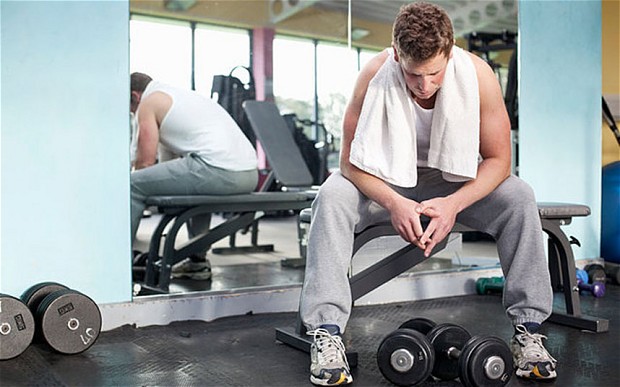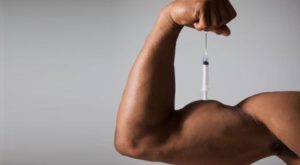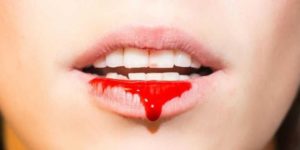
The body beautiful

Or do you hate the entire thing, every bit of it, from the soles of your feet to the top of your stupid, misshapen head? It’s not an easy thing to discuss, to highlight your flaws, the things you hate about yourself, the things you’d do anything to change.
Some people, in an effort to deflect attention from their imperfections, choose to draw attention to them. In typically Irish fashion, they take ownership of these perceived defects, constantly reminding everyone that they have a massive nose, stumpy little legs or a mild fungus infection – which no one could possibly have known about – at every possible opportunity. This solves nothing. They’re fooling no one.
No, in order to properly address the issue one must discuss it openly and seriously, and not obscure their true feelings behind self-deprecation and false joviality.
I’ll go first. I hate my arms. Always have done. They’re too thin, too weedy, more like the arms of young boy or a slender woman than those of a fully-matured, adult male. There are other parts of my body I’m not mad about but my arms are the ones I detest the most. I don’t try to conceal them, it’s not like they’re hideous to look at, but I’m certainly self-conscious of them during the summer months and would never wear one of those sleeveless basketball tops even though I’ve always wanted to.
Now your turn. Tell the person beside you what you hate about yourself (only do this if you’re at home, it doesn’t work so well if you’re on the bus or at the waiting room in the dentist’s). You’ll find it liberating, strangely therapeutic. And when you’re done, the other person can tell you about their insecurities and you can have a good laugh at their expense.
Anyway, back to my arms. I’ve always had these arms, I had them all the way through my teens and early twenties, through those years when young men seek to assert their masculinity in whatever way they can. But it wasn’t so bad. Because, in those days, it didn’t matter what kind of physique you had, not really. Masculinity was measured in other, more traditional ways; how many women you’d bedded, how good you were at fighting, at playing sport, at drinking, at just being a bit of an all-round lad. You know yourself.

Sure, we all tried to look good, whether it was your ould lad slapping on the Old Spice, or my generation and the first awakenings of metrosexuality, but to be a teenage boy in 2018 is to be under a unique level of pressure and expectation.
I’ll never forget the day, as a mature student in a class of males a decade younger than me, one of our lecturers asked how many of us went to the gym on a regular basis. Every hand in the room went up, save mine. And these were journalism students, not sports’ science jocks. Yes, some of them played sport, but most ‘worked out’ in the hope of achieving physical perfection, or, at the very least, getting all toned up for a night out at the weekend.
In one sense being body-aware is a good thing, it encourages people to exercise, to take care of themselves. But how many young men lift weights and go to the gym for health reasons? Very few I suspect.
No, the emphasis is on improving one’s physique, in enlarging those biceps, triceps and quads, in looking as manly, as big, as possible when posing for pictures on social media. And if that physical form can’t be improved by hard work and sweat, then there are other means, quick-fix measures to attain all the results with only some of the work.
In 2015 Gardaí seized 38,049 units of illegal steroids in this country. By 2017 that number had risen to 449,411. And while the latter figure could, if you wished, be attributed to greater vigilance on the part of our national police force, the inescapable truth is that more and more people, predominately young males in their twenties, are purchasing steroids for their own personal use.
Some are using them to boost their athletic performances; weightlifters, hurlers, rugby players; which is worrying enough in its own right. But more still are injecting themselves with toxic substances to encourage muscle growth, increase bone density, to achieve nothing more than the body they’ve always dreamed of.

This recreational use, wherein steroids are used solely for cosmetic reasons by ordinary young men, is a new phenomenon and it represents the biggest, most dangerous, drug epidemic this country has seen in a generation. But because these drug takers aren’t coming home from nightclubs at five in the morning, eyes falling out of their head, high as a kite and loving life, no one seems to notice.
Instead they just comment on how big their son/brother/nephew/cousin is getting and how they must never be out of that feckin’ gym.
Here in Limerick we’ve already seen the tragic effects of drugs like Stanozolol, the anabolic steroid which was found in the system of 18-year-old Luke O’Brien May following his death in June of last year. But in most instances the true impact of these drugs doesn’t become apparent until way down the line.
For evidence of this one need only look at the fate of former Eastern Bloc athletes, Soviets and East Germans who, having been force-fed steroids to capture Olympic gold, suffered untold illness and anguish in later life; heart conditions, infertility, kidney failure, high blood pressure, and, in many instances, death.
I could go on, I could point to the litany of professional wrestlers who died prematurely, the cyclists, the men and women who sacrificed their health for glory and paid the ultimate price, but I think you get the idea.
Is looking good really that important? Is it really worth risking your ability to father a child, or your future health, just so you can impress the ladies on a Saturday night?
Speaking of ladies, you’ve had this for years, this pressure to look a certain way. While we were busy quaffing pints and eating curries, you were being told that your bust was too small, your hips too narrow, your hair not lustrous enough. And you’re still hearing it, now more than ever. But in 2018 so too are the boys. And whereas modern women are content to try the occasional faddish diet, or, in extreme cases, take suspicious looking pills that promise to suppress their appetite, their male counterparts are slowly destroying themselves, often without even realising it.
Fee fi fo fum I smell the blood of a healthy young person

The worst thing is, there’s no escape. No matter how old you are, whether you’re a fresh-looking fifty-something with a face full of Botox, or a new-born baby with nary a tooth to its name, it’s going to get you eventually. Those wrinkles will deepen, those pains will become more pronounced, and before you know it you’re officially old.
Yet, help may at hand, and from a very convenient source.
Research carried out by scientists at University College London (UCL) has revealed that ingesting young people’s blood could improve the health of the aged. While not capable of extending one’s life, this blood, taken from a selection of volunteers aged between 16-25, was found to limit age-related illnesses.
However, as with most new forms of medicine, the procedure comes at a cost. Two-and-a-half litres of this revitalising blood retails at €8,000. Yet, unlike other expensive pharmaceuticals, this elixir is pretty much available everywhere. In fact, if you’re lucky, you might even have a stash or two knocking about in your house.
There might be litres of the stuff upstairs, contained inside a lumpen, grumpy container which seems to do nothing but eat, sleep and complain.
Far be it from me to suggest your next move, but if you need any advice, any tips, I hear









